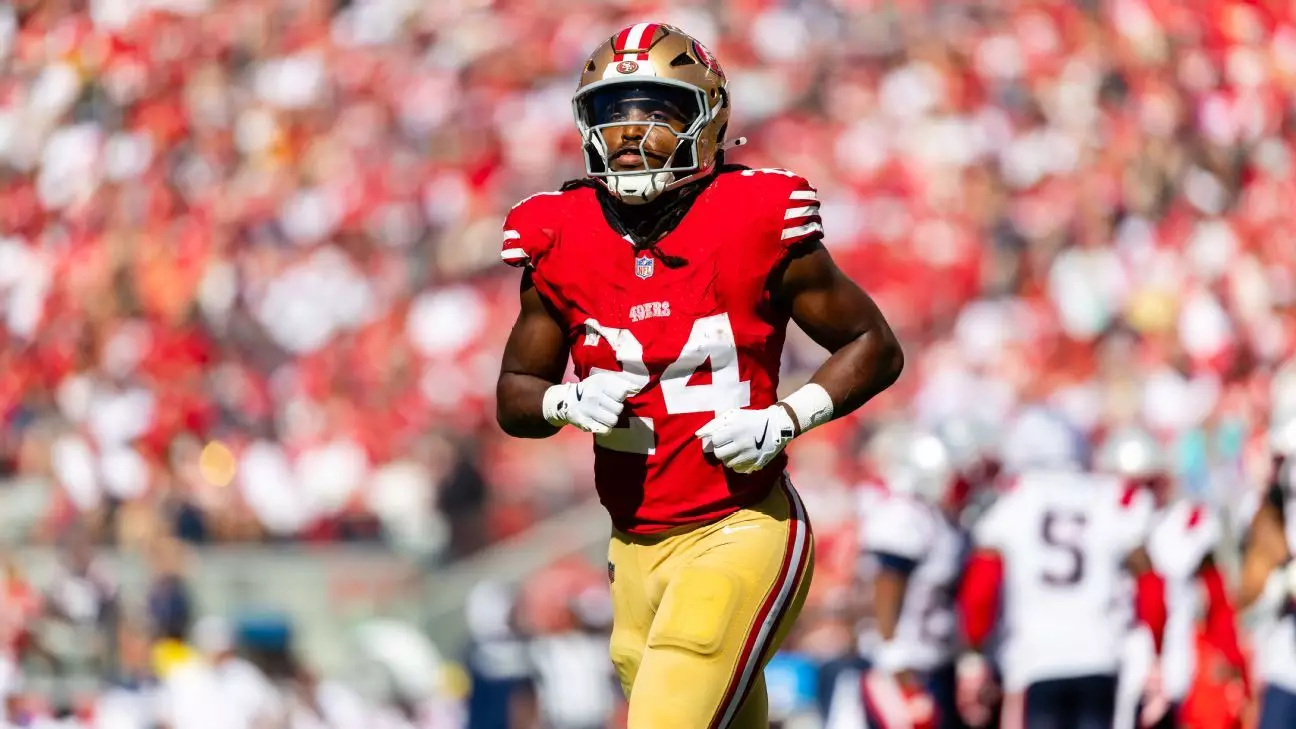In an impressive strategy to revamp their roster, the Minnesota Vikings have made a significant acquisition by trading for running back Jordan Mason from the San Francisco 49ers. This move not only embodies the Vikings’ commitment to enhancing their team but also highlights a broader NFL trend towards seizing young talent with proven potential. With this trade, the Vikings are signaling to fans and competitors alike that they are serious about building for the future by securing a running back who has demonstrated his capabilities on a less-than-ideal team backdrop.
The trade mechanics are intriguing in themselves. Minnesota will part with a 2026 sixth-round pick while also agreeing to a swap of picks in the current draft, receiving No. 187 and giving up the 160th slot. Such transactions are often the lifeblood of franchises, revealing the art of negotiation in talent acquisition. Jordan Mason’s agreement to a two-year deal worth $7 million, with a maximum reach of $12 million, underscores an effective balance between investment and potential return on that investment. This deal also reflects the Vikings’ proactive approach in locking in talent rather than waiting passively for the draft.
Jordan Mason: A Rising Star
At just 25 years old, Mason is far from a seasoned veteran, allowing the Vikings to bring in a young player with fresh legs and dynamic potential. In a league that increasingly values agility and versatility in running backs, Mason checks both boxes. Last season, he showcased his prowess when thrust into the lead role for the 49ers, racking up impressive stats while filling in for an injured Christian McCaffrey. His performance leading to 789 rushing yards on 153 carries, with an average of over 5 yards per attempt, speaks volumes about his natural ability to navigate defensive lines.
While many may focus on Mason’s talent, his contract represents an interesting departure from the traditional high-stakes negotiations often seen in the NFL. Instead of investing heavily in a more established player, the Vikings leveraged Mason’s rising star status, hinting at a long-term vision that could see them enjoying durable success without severe financial penalties.
The New Viking Backfield
Mason joins another significant figure in the Viking backfield: Aaron Jones, who recently signed a two-year contract worth $20 million. This pairing augurs well for the Vikings, creating a dual-threat dynamic capable of overwhelming opposing defenses. Rather than relying solely on Jones, who etched his name in the books with a whopping 306 touches last season, the Vikings now have the luxury of handing off part of the workload to Mason. This not only extends the longevity of both players on the field but also allows for strategic play-calling that can keep opponents guessing.
Moreover, this duo will benefit from a fortified offensive line, featuring newly-acquired center Ryan Kelly and right guard Will Fries, who collectively pocketed a staggering $107 million in deals. This investment in the offensive line illustrates the Vikings’ holistic strategy of reinforcing their backfield talent while ensuring that run-blocking schemes will thrive. Given that Mason delivered a career-high rushing performance last year before a high ankle sprain sidelined him, a robust offensive line may be precisely what he needs to unleash his full potential.
Looking Ahead: A Shift in the NFL Landscape
The Vikings’ transactional blitz, which included the signing of 12 players in just a week, is a noteworthy example of how an NFL team can evolve dramatically within a single offseason. A fanbase that enjoyed a remarkable 14-3 record last season may now witness the dawning of a new era that emphasizes youth, versatility, and a commitment to dynamic play. This is not merely about winning; it’s about creating a sustainable model that could yield rewards for years to come.
On the flip side, the 49ers find themselves in a scramble for depth in their backfield after losing Mason, who had become an integral part of their game plan. With Christian McCaffrey’s ongoing recovery and uncertainty about other players, San Francisco’s management must navigate the potential ramifications of this loss. Such complexities highlight just how mutations in team rosters can shift the balance of power within the league from one season to the next.
In the grand tapestry of the NFL, trades like the one involving Jordan Mason represent more than mere transactions; they reflect a broader philosophy within football management. The Vikings are not only preparing for the next season; they are also strategically positioning themselves in an ever-evolving landscape that values adaptability and foresight.

